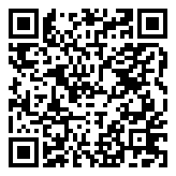Diseño de un chatbot integrado para el área de ventas: potenciando la experiencia de usuario utilizando la metodología design thinking, Perú
DOI:
https://doi.org/10.53732/rccsociales/e701125Palabras clave:
Chatbots, experiencia de usuario, pensamiento de diseño, interacción humano-computadora, comercio minorista, sistemas de informaciónResumen
El objetivo de esta investigación fue diseñar e implementar un chatbot de WhatsApp para optimizar el acceso a información clave en tiempo real (precios, stock y tallas) dirigida a asesores de ventas en tiendas minoristas de Lima, Perú. Se utilizó un enfoque cualitativo aplicando la metodología Design Thinking, que incluyó la fase de empatía mediante entrevistas a 12 asesores de ventas, la ideación y prototipado con herramientas no-code (Make y WhatsApp Cloud API), y la validación a través de una evaluación heurística con un experto en retail y automatización. Los resultados evidenciaron mejoras en la eficiencia operativa, reducción de tiempos de búsqueda de información y una alta frecuencia de uso del chatbot por parte de los asesores. En conclusión, la integración de chatbots en el entorno de ventas minoristas demuestra un potencial significativo para optimizar la experiencia en tienda y apoyar la toma de decisiones comerciales. Se recomienda que futuras investigaciones analicen su impacto cuantitativo en indicadores de ventas y satisfacción del cliente.
Citas
Aflatoony, L., Perkins, M., Waldrop, D., & Hepburn, K. (2021). Design thinking as a method for developing caregiver (and other) interventions. Innovation in Aging, 5(Suppl. 1), 393. https://doi.org/10.1093/geroni/igab046.1530
Ajimati, M. O., Carroll, N., & Maher, M. (2025). Adoption of low-code and no-code development: A systematic literature review and future research agenda. Journal of Systems and Software, 222, 112300. https://doi.org/10.1016/j.jss.2024.112300
Cho, H., Keenan, G., Madandola, O. O., Dos, C., Macieira, T. G. R., Bjarnadottir, R. I., Priola, K. J. B., & Lopez, K. D. (2022). Assessing the usability of a clinical decision support system: Heuristic evaluation. JMIR Human Factors, 9(2), e31758. https://doi.org/10.2196/31758
Christianto, V., & Smarandache, F. (2024). The convergence of Ikigai and design thinking: Crafting a purposeful framework. Sustainable Machine Intelligence Journal, 7. https://doi.org/10.61356/smij.2024.77101
Cordero, J., Barba-Guamán, L., & Guamán, F. (2022). Use of chatbots for customer service in MSMEs. Applied Computing and Informatics. https://doi.org/10.1108/ACI-06-2022-0148
Ghosh, S., Ness, S., & Salunkhe, S. (2024). El papel de los chatbots habilitados para IA en el servicio al cliente omnicanal. Revista de Investigación e Informes de Ingeniería, 26(6), 1184–1196. https://doi.org/10.9734/jerr/2024/v26i61184
Hamza Ed-douibi, L., Luis, J., Daniel, G., & Cabot, J. (2021). A model-based chatbot generation approach to converse with open data sources. In Lecture Notes in Computer Science (pp. 440–455). Springer. https://doi.org/10.1007/978-3-030-74296-6_33
Iba, T., & Kimura, N. (2023). Practice coding with a pattern language: A case study of coding with a pattern language for value-creation marketing. In Proceedings of the 28th European Conference on Pattern Languages of Programs (pp. 1–13). ACM. https://doi.org/10.1145/3628034.3628049
Kenny, U., Regan, Á., Hearne, D., & O’Meara, C. (2021). Empathising, defining and ideating with the farming community to develop a geotagged photo app for smart devices: A design thinking approach. Agricultural Systems, 194, 103248. https://doi.org/10.1016/j.agsy.2021.103248
Mzwri, K., & Turcsányi-Szabó, M. (2023). Chatbot development using APIs and integration into the MOOC. Revista Centroeuropea de Nuevas Tecnologías en Investigación, Educación y Práctica, 5(1), 470–491. https://doi.org/10.36427/cejntrep.5.1.5041
Naqvi, M., Zhang, H., Naqvi, M., & Kun, L. (2023). Impact of service agents on customer satisfaction and loyalty: Mediating role of chatbots. Journal of Modelling in Management, 19(2), 353–370. https://doi.org/10.1108/jm2-01-2023-0004
Olavarría J., Cambra F., & Arditto D.. (2020). Relevance of salespeople profiles: An analysis in an emerging economy. Marketing Intelligence & Planning, 38(6), 747–761. https://doi.org/10.1108/MIP-04-2019-0230
Olorunfemi, D. (2023). Diary studies in research: More than a research method. International Journal of Market Research, 66(4), 410–427. https://doi.org/10.1177/14707853231222139
Peter, E., Friedland, J., & McFarlane, J. (2015). The ethics in qualitative health research: special considerations. Ciência & Saúde Coletiva, 20(9), 2625–2630. https://doi.org/10.1590/1413-81232015209.06762015
Ramos De Santis, P. (2024). Satisfacción del cliente en la logística: un análisis de chatbots en las empresas líderes de Colombia, Perú y Ecuador. Retos. Revista de Ciencias de la Administración y Economía, 14(27), 115-130. https://doi.org/10.17163/ret.n27.2024.08
Shah, M., Jactat, B., Yasui, T., & Ismailov, M. (2023). Low-fidelity prototyping with design thinking in higher education management in Japan: Impact on the utility and usability of a student exchange program brochure. Education Sciences, 13(1), 53. https://doi.org/10.3390/educsci13010053
Shé, N., Farrell, O., Brunton, J., & Costello, E. (2022). Integrating design thinking into instructional design: The #OpenTeach case study. Australasian Journal of Educational Technology, 38(1), 33–52. https://doi.org/10.14742/ajet.6667
Steinert, M., Isa, S., Jamaludin, N., & Liem, A. (2024). Investigating the correlation between visual representation flow, physical prototyping, and designers’ creativity. The Design Journal, 27(5), 954–975. https://doi.org/10.1080/14606925.2024.2378574
Tate, R., Beauregard, F., Peter, C., & Marotta, L. (2023). Pilot testing as a strategy to develop interview and questionnaire skills for scholar practitioners. Impacting Education: Journal on Transforming Professional Practice, 8(4), 20–25. https://doi.org/10.5195/ie.2023.333
Wenngren, J., & Rizk, A. (2024). Prototyping for digital innovation: Investigating the impact of digital technology on prototyping elements. Administrative Sciences, 14(7), 142. https://doi.org/10.3390/admsci14070142
Zhu, J., Jiang, Y., Wang, X., & Huang, S. (2023). Social- or task-oriented: How does social crowding shape consumers’ preferences for chatbot conversational styles? Journal of Research in Interactive Marketing, 17(5), 641–662. https://doi.org/10.1108/jrim-01-2022-0007
Archivos adicionales
Publicado
Cómo citar
Número
Sección
Licencia
Derechos de autor 2025 Carmen Chieng Cueva, Jeferson Pinedo Reynoso

Esta obra está bajo una licencia internacional Creative Commons Atribución 4.0.



1.png)






















 Todo el contenido de esta revista, está bajo
Todo el contenido de esta revista, está bajo 